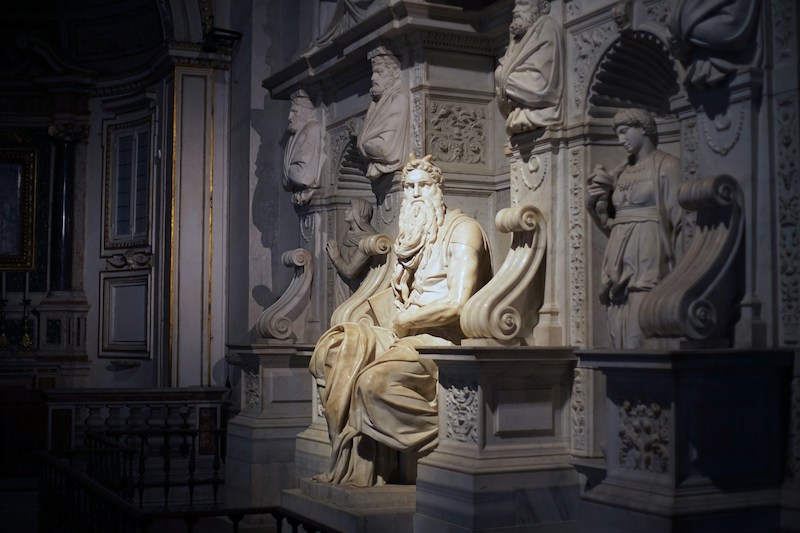Michelangelo Buonarroti, one of the greatest artists of all time, left an indelible mark on Rome. His works, ranging from sculptures to architectural masterpieces, have become integral parts of the city’s cultural and artistic heritage. For those passionate about art and history, a Rome private tour focused on Michelangelo’s legacy offers an unparalleled journey into the mind and soul of this Renaissance genius, allowing visitors to explore his masterpieces in some of the city’s most iconic locations.
Here’s a guide to the key sites in Rome where you can experience the genius of Michelangelo up close.
Rome Private Tour – The Sistine Chapel – Vatican Museums
No visit to Rome is complete without seeing Michelangelo’s Sistine Chapel in the Vatican Museums. This masterpiece, painted between 1508 and 1512, is renowned for its stunning ceiling, which depicts the Creation of Adam and other scenes from the Book of Genesis. Michelangelo’s powerful use of color, his mastery of human anatomy, and the dynamic composition of the scenes create a breathtaking visual experience that has captivated audiences for centuries.
The Last Judgment, painted by Michelangelo on the altar wall of the Sistine Chapel between 1536 and 1541, is another work of profound significance. This monumental fresco, filled with dramatic tension and emotion, portrays the second coming of Christ and the final judgment of souls. The figures, both serene and tormented, showcase Michelangelo’s unparalleled ability to convey complex spiritual and human themes.
When visiting the Vatican Museums, it’s best to go early or opt for a private tour to fully appreciate the Sistine Chapel’s grandeur without the crowds. As part of the larger museum complex, you’ll also have the opportunity to see many other Renaissance masterpieces, making it a truly enriching experience.
Rome Private Tour – St. Peter’s Basilica
Michelangelo’s genius is also immortalized in St. Peter’s Basilica, one of the most significant religious buildings in the world. Although he was not the original architect, Michelangelo was commissioned in 1547 to take over the design of the basilica, and he transformed it into a masterpiece of Renaissance architecture.
The most iconic feature of St. Peter’s, the dome, was designed by Michelangelo. His engineering prowess and artistic vision culminated in a dome that remains one of the largest and most impressive in the world. The interior of the dome, with its soaring height and intricate details, draws the eye upward, creating a sense of awe and spiritual elevation.
Another highlight in St. Peter’s is Michelangelo’s Pietà, located in the first chapel to the right as you enter the basilica. Sculpted in 1499 when Michelangelo was just 24 years old, the Pietà is a poignant and beautifully rendered depiction of the Virgin Mary holding the body of Christ after the crucifixion. The delicacy of the carving, the serene expression on Mary’s face, and the lifelike rendering of Christ’s body demonstrate Michelangelo’s extraordinary skill in marble sculpture.
Visiting St. Peter’s Basilica offers not only a chance to see these masterpieces but also to experience the grandeur and spiritual significance of one of Christianity’s holiest sites.
Rome Private Tour – Capitoline Hill – Piazza del Campidoglio
Michelangelo’s influence on Rome extends beyond sculpture and painting to urban design. The Piazza del Campidoglio, located on Capitoline Hill, is one of the most beautiful squares in Rome, designed by Michelangelo in 1536.
Commissioned by Pope Paul III, Michelangelo was tasked with redesigning the ancient Capitoline Hill to restore its grandeur. He transformed the space into a cohesive and elegant square, featuring a central oval-shaped piazza surrounded by three palazzi: the Palazzo Senatorio, the Palazzo dei Conservatori, and the Palazzo Nuovo. The focal point of the square is the equestrian statue of Marcus Aurelius, which Michelangelo strategically placed to create a sense of balance and harmony.
The piazza’s intricate geometric pattern on the pavement, designed by Michelangelo, guides visitors’ eyes towards the center, creating a sense of unity and order. The steps leading up to the square, known as the Cordonata, are another of Michelangelo’s innovations, designed to be gentle enough for horses to climb, further emphasizing the accessibility and grandeur of the space.
Today, the Capitoline Museums, housed in the Palazzo dei Conservatori and Palazzo Nuovo, are home to a vast collection of Roman art and antiquities, offering visitors a chance to explore both Michelangelo’s architectural genius and the city’s rich history.
Rome Private Tour – The Tomb of Pope Julius II – San Pietro in Vincoli
Another essential site for Michelangelo enthusiasts is the Church of San Pietro in Vincoli, home to the Moses, a central figure of the tomb of Pope Julius II. Commissioned in 1505, the tomb was intended to be a grand structure with over 40 figures, but due to various delays and changes in plans, it was never completed as originally envisioned.
The Moses, however, stands as one of Michelangelo’s most powerful sculptures. Depicting the biblical figure with intense realism and emotion, the sculpture is famous for the lifelike detail in Moses’ beard, muscles, and expression. The figure’s powerful pose, with one arm resting on the Ten Commandments and the other hand on his lap, conveys a sense of both authority and contemplation.
The church itself, although less famous than other sites in Rome, offers a more intimate setting to appreciate Michelangelo’s work. Visiting San Pietro in Vincoli allows you to see the Moses up close and to reflect on the artist’s ability to capture the human condition in marble.
Rome Private Tour – Santa Maria degli Angeli e dei Martiri
Santa Maria degli Angeli e dei Martiri is a unique church that showcases Michelangelo’s architectural genius. Located near the Piazza della Repubblica, the church was built inside the ruins of the ancient Baths of Diocletian. Michelangelo was commissioned in 1563 to convert the central hall of the baths into a church, and he ingeniously incorporated the massive Roman structures into the design.
The church’s interior is vast and awe-inspiring, with soaring ceilings and a sense of grandeur that reflects both the scale of the ancient baths and Michelangelo’s architectural vision. The transformation of a pagan site into a Christian church symbolizes the continuity and renewal of Rome’s architectural heritage.
Santa Maria degli Angeli e dei Martiri is less crowded than other famous churches in Rome, providing a serene space to appreciate Michelangelo’s work and the historical layers of the city.
Michelangelo’s contributions to Rome are vast and varied, offering a comprehensive look into the mind of one of history’s greatest artists. Whether through his breathtaking frescoes in the Sistine Chapel, his architectural brilliance in St. Peter’s Basilica, or his sculptural mastery seen in the Pietà and Moses, Michelangelo’s legacy is woven into the fabric of Rome.
Visiting these sites not only allows you to experience Michelangelo’s genius firsthand but also provides a deeper understanding of the Renaissance and its impact on the Eternal City. Each location offers a unique perspective on his work, making a tour of Michelangelo’s Rome an unforgettable journey through art and history.
Keep reading:
Rome private tours, the Master of Baroque Art Caravaggio
Exploring the Renaissance in Rome: Private Tours of Michelangelo, Raffaello, and Bramante


 WhatsApp us
WhatsApp us